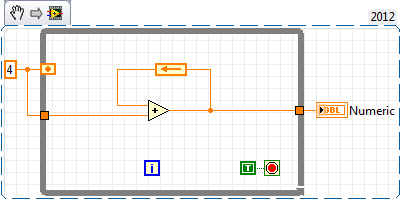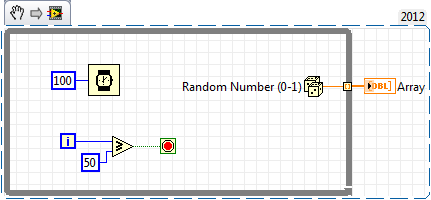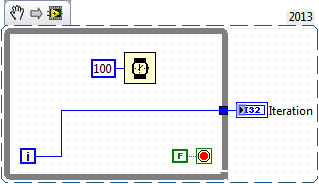CLAD 02-14
What value does the Numeric indicator display after this code executes?

- 0
- 4
- 8
- The While Loop iterates indefinitely
What value does the Numeric indicator display after this code executes?

Which of the following statements is TRUE regarding the execution of the following code?

Which of the following statements is TRUE about the following code segment?

Which timing function (VI) is the best choice for timing control logic in applications that run for extended periods of time?




What value does the Result indicator display after the code snippet executes?

The Wait function can be added to While Loops:
The Wait Until Next ms Multiple function: